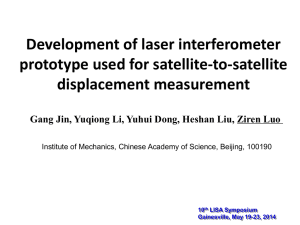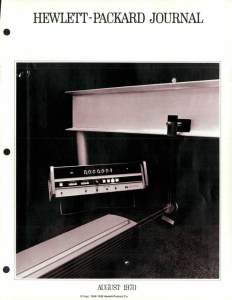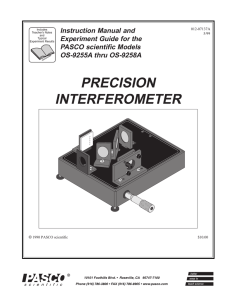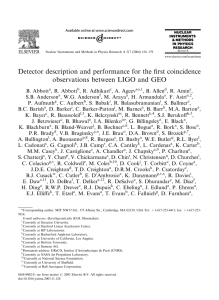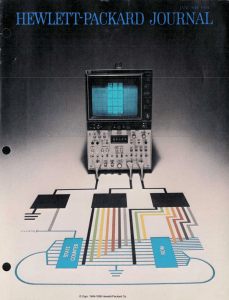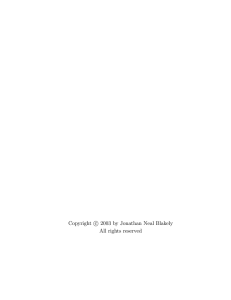Experimental and Theoretical Analysis for Optical Induced Thermal
advertisement
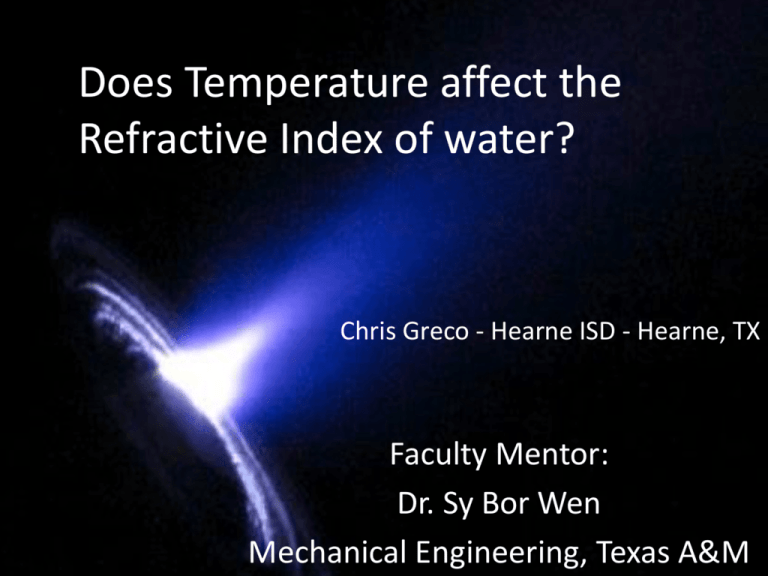
Does Temperature affect the Refractive Index of water? Chris Greco - Hearne ISD - Hearne, TX Faculty Mentor: Dr. Sy Bor Wen Mechanical Engineering, Texas A&M Research Question Re-Cap – Generating differing types of nano particles – Using laser ablation – Determining the effectiveness of a zone plate as a lead in to creating nano-optic devices – Experimental research in nano patterning Using thermal reflectance as a non-contact measuring tool to find temperature – Via time resolved interferometry Modified Sagnac Interferometer Will allow for the non contact measurement of temperature of the nsom probe during pulsed heating through the nano second laser Will be compared to existing simulations of Dr. Wen’s David et al, optic letters 1999 Why Measure Refraction? – – – – Lenses Fiber Optics Telescopes Computer software enhancement of images (adaptive optics) http://illuminatingreality.com/wp-content/uploads/2009/08/distortion.jpg http://wwwmaths.anu.edu.au/~stals/galaxy_with_and_without_ao.png Project Timeline • 6 class days for the project. 17 days for the entire unit (Properties and Examples of Waves) – Intro (1 day) – Project begins at day 8 of the unit – Set up and Execution (2.5 days) – Lab write up (1.5 days) – Review and post-test(1 day) Day by Day Breakdown Pre-test at beginning of school Day 1 – – – – – Pre test Review key concepts Introduce new concepts Laser safety Introduce the engineering question – Does the refractive index of water go up when you heat it or cool it from room temp?..Hook it to submarine sonar in varying ocean temps Day 2 – Intro to laser setup – Students get materials to set up experiment Day 3 –Conduct Experiment –Measuring/graphing refractive index of water as determined by change of temperature Day 4 – Conclude Experiment/data gathering – Begin formal lab writeup Day 6 –Lab review/Discussion Post-Test will occur at end of The unit Day 5 – Conclusion of lab write up Necessary Materials/Equations • • • • • • Laser pointer Mirrors Kinetic mounts Interferometer Negative lens Aluminum water channel with glass ends • • • • • OPL=2Ln ∆=2L(n-1.3353) ∆ = Nλ n = (Nλ)/2L +1.3353 n = (Nλ)/2 + λ/4L + 1.3353 Lab setup Interference Pattern Water filled Aluminum channel L Laser Hotplate Interferometer Mirrors Lab setup Interference Pattern Water filled Aluminum channel L Laser Hotplate Interferometer Mirrors Fringe Movement Possible Questions for Pre/Post test • 1. Which is not a normal property of waves? • a. energy • b. wavelength • c. mass • d. speed • e. frequency • 2. Which of the following is the amplitude? • A • B • C • D (circle the correct letter) How is the class project Relevant? • Dr. Wen’s Research Lab • In the Classroom Bridging Into the Research Lab In the Lab – research into light (laser) behavior in different materials – Using experiments to provide information in order to assess a hypothesis – Using optic devices – producing papers on results In the Classroom – Computing the refraction of water at different temps using lasers – Physics Teks 7b (understanding how heat energy can increase disorder) and 8a (understanding properties of waves) – Scientific Method – Setting up the experiment – Writing a formal lab report – Physics Teks 1ab,2a-f,3a-c Acknowledgements National Science Foundation (NSF) Nuclear Power Institute (NPI) Texas Workforce Commission (TWC) Chevron E3 Dr. Wen and his research staff Questions?







